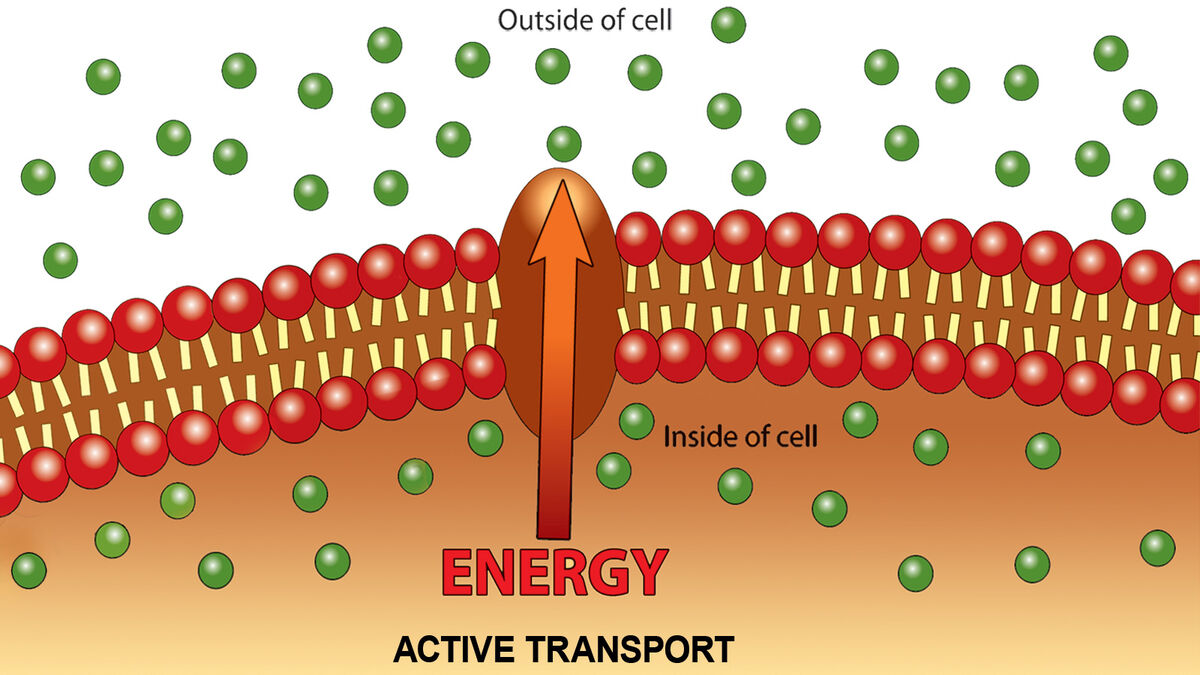
Active transport is the process by which materials move from a lower concentration to a higher concentration. Using adenosine triphosphate (ATP, needed for cellular energy) from respiration, molecules can move from one side of a cell wall to another. Keep reading to find examples of active transports in both plants and animals.
Examples of Active Transport in Plants
Though plants don’t appear very busy, the cells in their roots, stems, and leaves are constantly working. Minerals from soil, sugars from the sun, and water molecules must travel throughout the plant – and slip through cell walls. In the cases where energy (such as ATP) is required for this process, active transport takes place.
Some examples of active transport in plants include:
- Ions moving from soil into plant roots
- Transportation of chloride and nitrate from the cytosol to the vacuole
- Sugars from photosynthesis moving from leaves to fruit
- Calcium using energy from ATP to move between cells
- Minerals traveling through a stem to various parts of the plant
- Water moving from plant roots to other plant cells via root pressure
Examples of Active Transport in Animals and Humans
Both animals and humans experience active transport at the cellular level. Neural cells, white blood cells, intestinal cells, and other cells around the body use active transport to distribute nutrients and ions. Here are some examples of active transport in animals and humans:
- Sodium-potassium pump (exchange of sodium and potassium ions across cell walls)
- Amino acids moving along the human intestinal tract
- Calcium ions moving from cardiac muscle cells
- Glucose moving in or out of a cell
- A macrophage ingesting a bacterial cell
- Enzyme secretion
- Release of antibodies
- Neurotransmitters transmitting across brain cell synapse
- White blood cells attacking disease-causing agents
Types of Active Transport
Active transport occurs when cells use energy to move molecules against the concentration gradient. Think of it like pushing a car uphill. If you were going downhill, gravity would do the work for you. But since you’re going against gravity, you need extra energy to do the job.
Active transport works the same way. For example, plant roots need every bit of water they can gather. The individual plant cells may have more water than the soil does, but they still need that water. That’s where active transport comes in – to move molecules where they might not naturally go.
There are two types of active transport that use energy to move molecules from lower to higher concentrations: primary and secondary active transport.
Primary Active Transport
Cells use the breakdown of ATP for primary active transport. The energy created by root pressure brings water molecules to higher concentrations in a plant, for example. Energy from cellular membrane pumps, such as the sodium-potassium pump, creates enough energy to move molecules across the membrane.
Secondary Active Transport
Cellular processes that use secondary active transport require leftover energy stores from primary active transport. This energy is stored in electrochemical gradients. As a primary active transport occurs via a carrier protein, a secondary active transport may share the carrier protein and energy it uses to transport a second molecule.
Endocytosis and Exocytosis
Two additional forms of active transport are endocytosis (items entering a cell) and exocytosis (items exiting a cell). In endocytosis, the cell can engulf liquid materials and absorb them, otherwise known as pinocytosis. Phagocytosis, the other form of endocytosis, involves a cell absorbing a solid particle. When a cell has enough of a substance or needs it to go elsewhere, it uses exocytosis to discharge the substance through the cell wall.
Active Transport vs. Passive Transport
It’s helpful to think of active transport and passive transport as opposites. You already know that active transports require energy to move molecules from lower to higher concentrations. Passive transport works the other way – higher to lower concentrations – and does not require extra energy. Diffusion and osmosis are examples of passive transport.
Learning Biology Concepts
Our cells are hard at work every second, providing us with plenty of energy, oxygen, and nutrients to sustain life. When you learn more about biological processes, you learn more about life. For more biological resources, check out an article on everyday examples of diffusion. How can you tell that these processes are passive transport and not active transport?